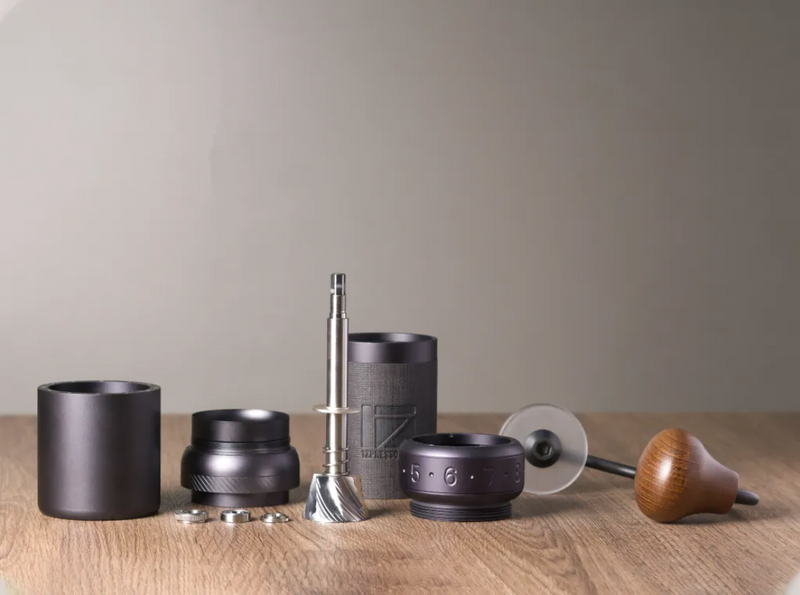Master the Art of Grinding Coffee Beans: An Overview to Coffee Grinders
For coffee lovers, the process of grinding coffee beans is even more than simply a regular job; it is an art form that can considerably affect the taste and top quality of the final brew. Recognizing the subtleties of different grinder types, picking the proper work dimension, and using the right strategies are essential steps towards accomplishing that best mug of coffee.
Kinds of Coffee Grinders
There are 3 key sorts of coffee mills generally made use of by coffee fanatics: blade mills, burr mills, and hand-operated mills. Blade mills are the many fundamental type, utilizing a basic blade to slice the coffee beans. While they are affordable and very easy to make use of, they usually result in irregular coffee premises because of irregular grinding. Burr grinders, on the other hand, offer more precision by crushing the beans between a moving grinding wheel and a non-moving surface. This leads to an uniform grind size, which is important for a consistent coffee flavor. Burr grinders can be found in both level and conelike forms, each offering somewhat various grinding characteristics.
Hand-operated grinders, as the name recommends, need manual initiative to grind the coffee beans. They are typically preferred by those that delight in the procedure of hand brewing coffee or for those that value mobility. Hand-operated grinders can differ in design, from straightforward handheld versions to much more intricate counter top versions. While they might require even more initiative, hands-on mills provide control over the grinding procedure, allowing customers to change the grind dimension to their preference. Each kind of coffee mill has its advantages and optimal usage situations, accommodating the varied preferences of coffee lovers.

Selecting the Right Work Dimension
With an understanding of the various types of coffee grinders, the next vital action in achieving the ideal mug of coffee is picking the right grind size. The grind size plays a considerable duty in establishing the flavor profile of your coffee (1Zpresso J-Ultra). Different brewing techniques need certain grind sizes to enhance the extraction of flavors from the coffee premises
For a crude work, perfect for French press and chilly mixture techniques, the coffee beans should resemble breadcrumbs, offering a robust and bold flavor. Medium-coarse grinds, suitable for Chemex or Clever Dripper, have a texture similar to coarse sand, offering a balanced preference.
Tool grinds, often utilized in drip coffee makers, have a consistency resembling regular sand, resulting in a well-rounded flavor. Great grinds, ideal for coffee makers, belong to table salt, yielding an abundant and extreme taste. Extra-fine grinds, used in Turkish coffee, are as fine as powdered sugar and produce a solid and powerful brew.
Grinding Techniques for Optimum Flavor
To remove the fullest capacity of taste from your coffee beans, understanding proper grinding methods is crucial. Consistency is essential when it comes to grinding coffee beans for ideal taste. By paying focus to these why not find out more grinding techniques, you can elevate the flavor account of your coffee and appreciate a more rewarding cup every time.
Maintenance and Cleaning Up Tips

Change more tips here any kind of damaged components promptly to maintain the high quality of your coffee work. By adhering to these upkeep and cleansing tips, you can guarantee that your coffee grinder proceeds to provide scrumptious fresh ground coffee for years to come.
Troubleshooting Common Mill Issues


Ensuring your coffee mill operates efficiently calls for skilled troubleshooting of typical problems that may arise during its usage. One typical issue with coffee grinders is inconsistent work dimension. This problem can happen due to dull blades, inappropriate calibration, or irregular coffee beans. To address this, ensure your mill's blades are sharp and effectively lined up, calibrate the grinder according to the wanted work size, and drink the mill carefully while being used to aid accomplish a much more uniform work.
Another constant problem is grinder clogging. This can occur when oils from the coffee beans build up and obstruct the grinder's chute. To settle this, take apart the grinder and tidy all parts extensively, paying special focus to the chute and burrs. Furthermore, be conscious of overfilling the hopper to avoid blockages.
Last but not least, if your grinder is creating too much noise throughout operation, it might show an issue with the electric motor or internal elements. In such cases, it is a good idea to consult the supplier's directions for repairing steps or helpful site seek specialist support to detect and rectify the problem without delay.
Conclusion
To conclude, mastering the art of grinding coffee beans includes recognizing the various sorts of coffee grinders, selecting the appropriate grind size, using correct grinding methods for optimal taste, and keeping and cleansing the mill consistently. By following these guidelines and troubleshooting typical grinder problems, coffee enthusiasts can elevate their coffee brewing experience and take pleasure in a scrumptious mug of coffee each time.